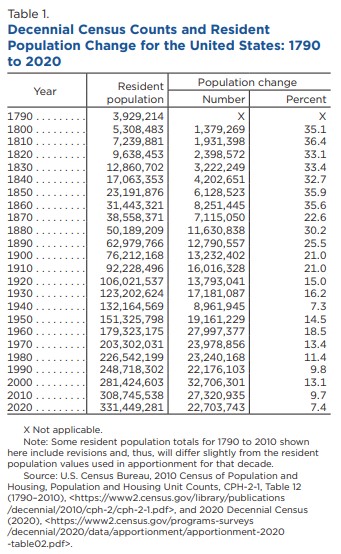Earlier this week the US Census Bureau released the “Apportionment Results” from the latest decennial census conducted in 2020.[1] These results provide a count of the resident population for the 50 States, the District of Columbia, and Puerto Rico, as well as US military and federal civilian employees and their dependents living outside the United States.

These results will be used to determine how many members of Congress each state will have until the next decennial census. There are 435 members of the US House of Representatives. Each state gets at least one representative (50) and the remaining representatives (385) are allocated based on each state’s share of the total apportionment population (331 million).[2]
Due to changes in the geographic distribution of the population, seven states will lose one representatives (California, Illinois, Michigan, New York, Ohio, Pennsylvania, West Virginia), and six states will gain one or more representatives (Texas, Colorado, Florida, Montana, North Carolina, Oregon). This change may or may not affect the balance of political power in Washington.
Another highlight from these results is that the US population increased at the slowest rate over any ten-year period, except for the Great Depression era between 1930 and 1940.[3]

The Census Bureau has not yet released all the information collected last year, so it’s too early to tell how changes in births, deaths, and immigration affected the results. These demographic factors determine the ratio of the working-age population to the dependent-age population (children and elderly). The dependency ratio can affect economic growth as well as the ratio of revenue and spending. In general, workers pay more taxes and dependents receive more benefits.
The Census Bureau will release additional data from the 2020 decennial census over the coming months. This data will provide additional insights into the population changes that affect our nation’s fiscal future.
[1] https://www.census.gov/data/tables/2020/dec/2020-apportionment-data.html
[2] https://www.census.gov/topics/public-sector/congressional-apportionment/about/computing.html
[3] A Preliminary Analysis of U.S. and State-Level Results From the 2020 Census




